At any moment, the extreme power of Nature can leave us awestruck—and overwhelmed. With the rains that recently drenched California…
Atmospheric Rivers and Building Hydrological Resiliency Through Regenerative Land Management
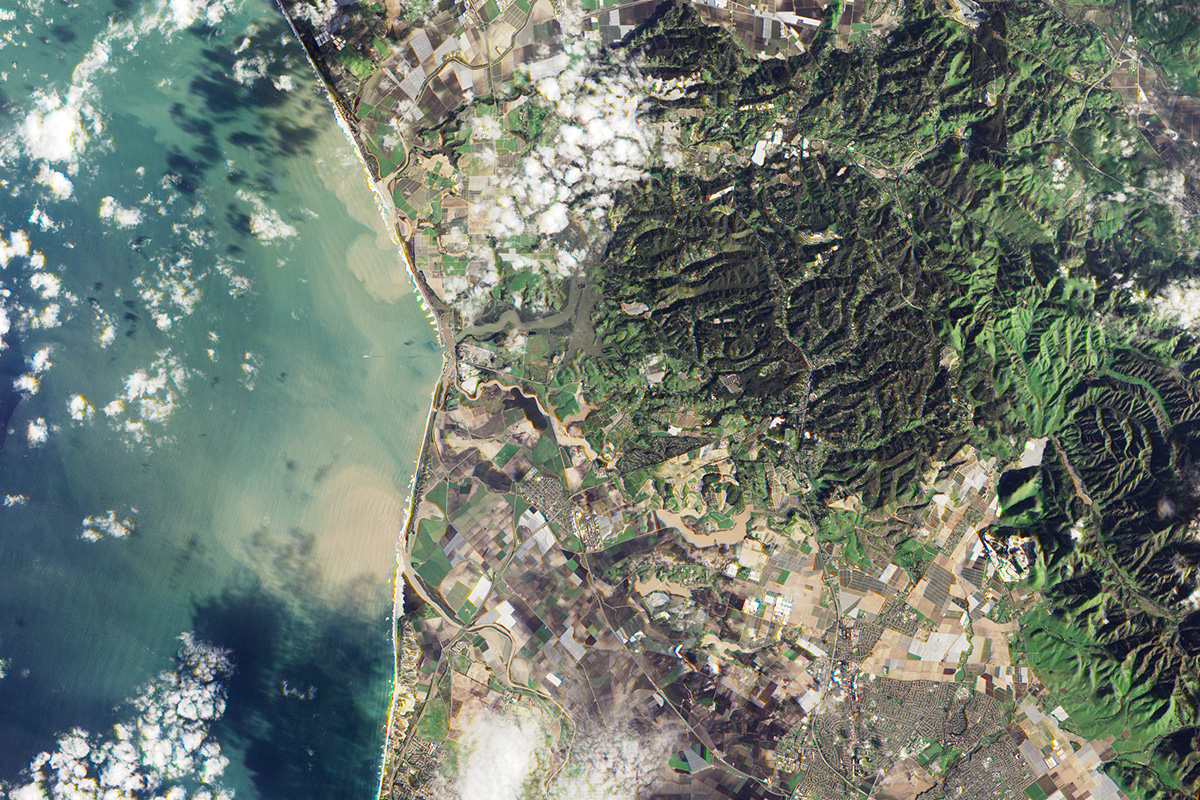
Sediment (light brown spots on left hand photo) pours into Monterey Bay, February 2017 (NASA Earth Observatory)
02/08/2023
By: Mark Biaggi
At any moment, the extreme power of Nature can leave us awestruck—and overwhelmed. With the rains that recently drenched California, referred to as ‘bomb cyclones,’ the question of how management can help our land be resilient in the face of unpredictable climate extremes is top of mind.
This January, an atmospheric river dropped 15.8” of rain on TomKat Ranch and a calculated 24.5 trillion gallons total of water across California in just 16 days. TomKat Ranch staff focus throughout the year to manage the land so that the ecosystem may benefit from the winter rains. Given the drought conditions in California over the last several years, this is especially important. We work to “bank” the rain by infiltrating it into the soil and promoting sufficient vegetation in pastures and along stream banks to slow the rain. By slowing and spreading the water, we create the conditions for moisture and sediment—along with the important minerals it carries—to sink into the soil and recharge the aquifer for future days.
Across the world today, vast swaths of lands across the world are in a condition that makes them unable to adequately absorb rainfall. There are many factors contributing to this reality, ranging from the presence of impermeable surfaces (like roads and roofs) to compacted, bare soils in various states of production and management.
For example, here’s a photo (below) we took during the recent storms of a tilled field with no cover crop—bare soil exposed to the elements. With no protection from vegetation and living roots, a lot of highly erodible and valuable coastal soils ended up in the ocean (visible in the distance), and the valuable rainwater followed much the same journey. This eroded topsoil is the wealth of the land, the fertility, the biology, the organic carbon; the rainwater is the foundation of life and production on the land. The question arises as we drive by the farm: How could changing land use practices help avoid the loss of these ecological and economic resources?
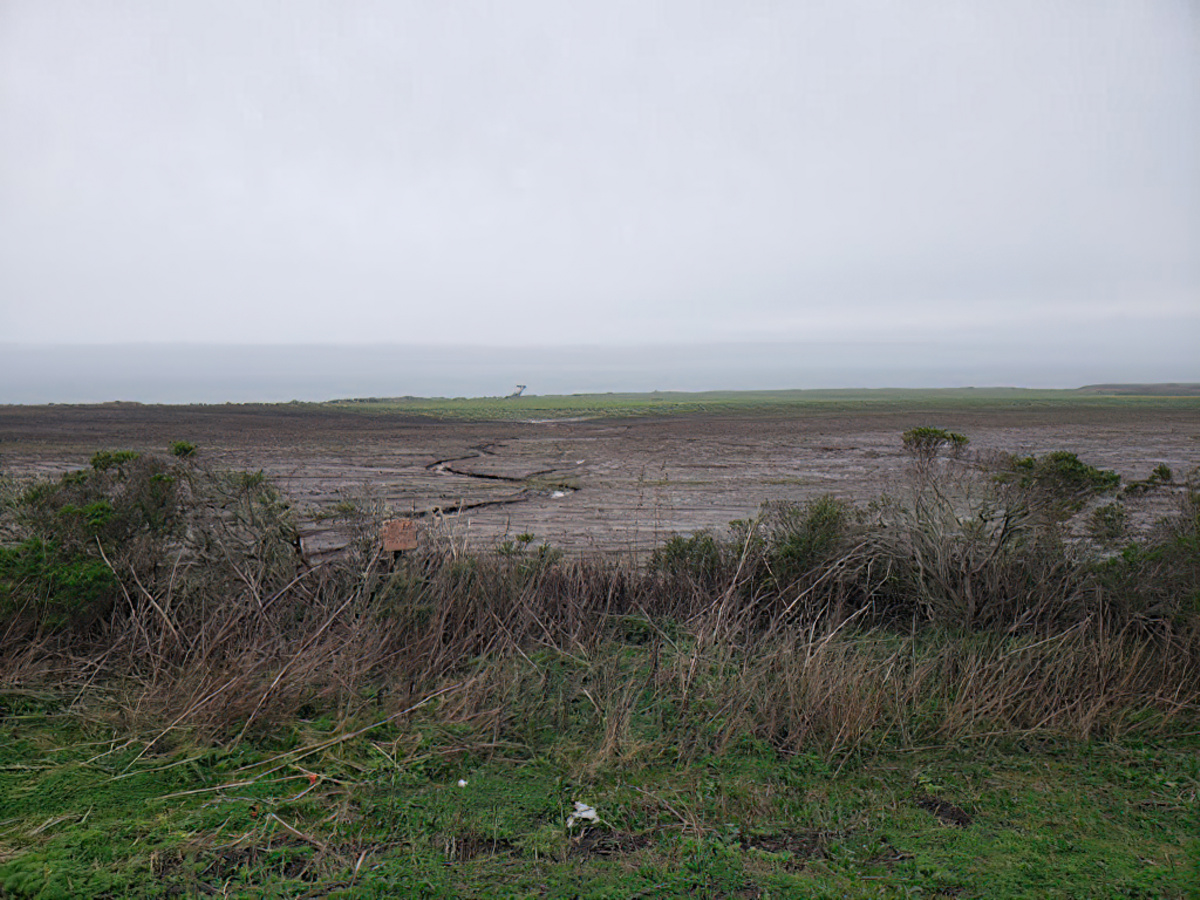
Bare soil is highly susceptible to topsoil loss
While our focus is on regenerating grasslands and permanent pasture, the principles of managing lands to improve water infiltration and storage (i.e., the water cycle) are the same for farming as for ranching and can help all production styles realize huge savings for both the economic and environmental bottom line.
Our team is exploring various methods to increase the resilience of the land and manage for whatever abundance or lack of water Nature sends our way. Improving the health of small upstream feeder creeks, so they slow, spread, and sink water and put sediment back on the land is one priority. We don’t have all the answers, but we are trialing techniques and learning from innovative regenerative managers around the world. What we learn, we are eager to share in the hopes that it may help others.
Here are a few observations and approaches from our recent rainy January:
Sweeping Waterbar: To prevent erosion throughout the year, we work to keep roads covered with grass and install waterbars during the dry season where we think they will be needed. When the rain fell this January, we identified strategic locations where additional waterbars were necessary. We dug this waterbar (pictured below) when it was wet. The moving rainwater informed where to direct the water so it could be spread across the landscape and reduce risk of harm to the road.
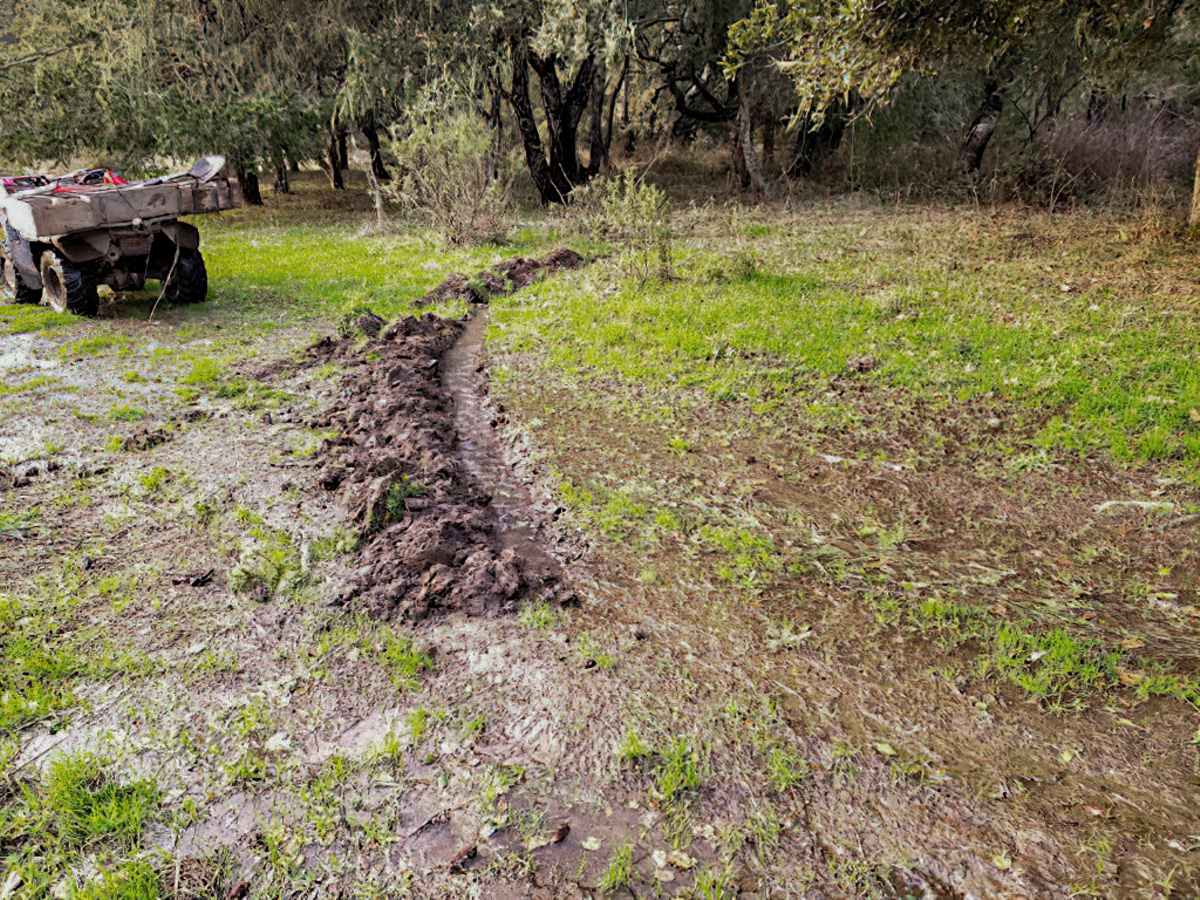
Sweeping waterbar at TomKat Ranch
Rehabilitating Upper Reaches: There are a lot of opportunities to address downstream problems by rehabilitating upper reaches of the watershed. Below, for example, is a feeder stream into Honsinger Creek, the main creek that runs through the ranch. Due to historical practices, the creek in this location is a straight deep channel and water runs fast when it rains.
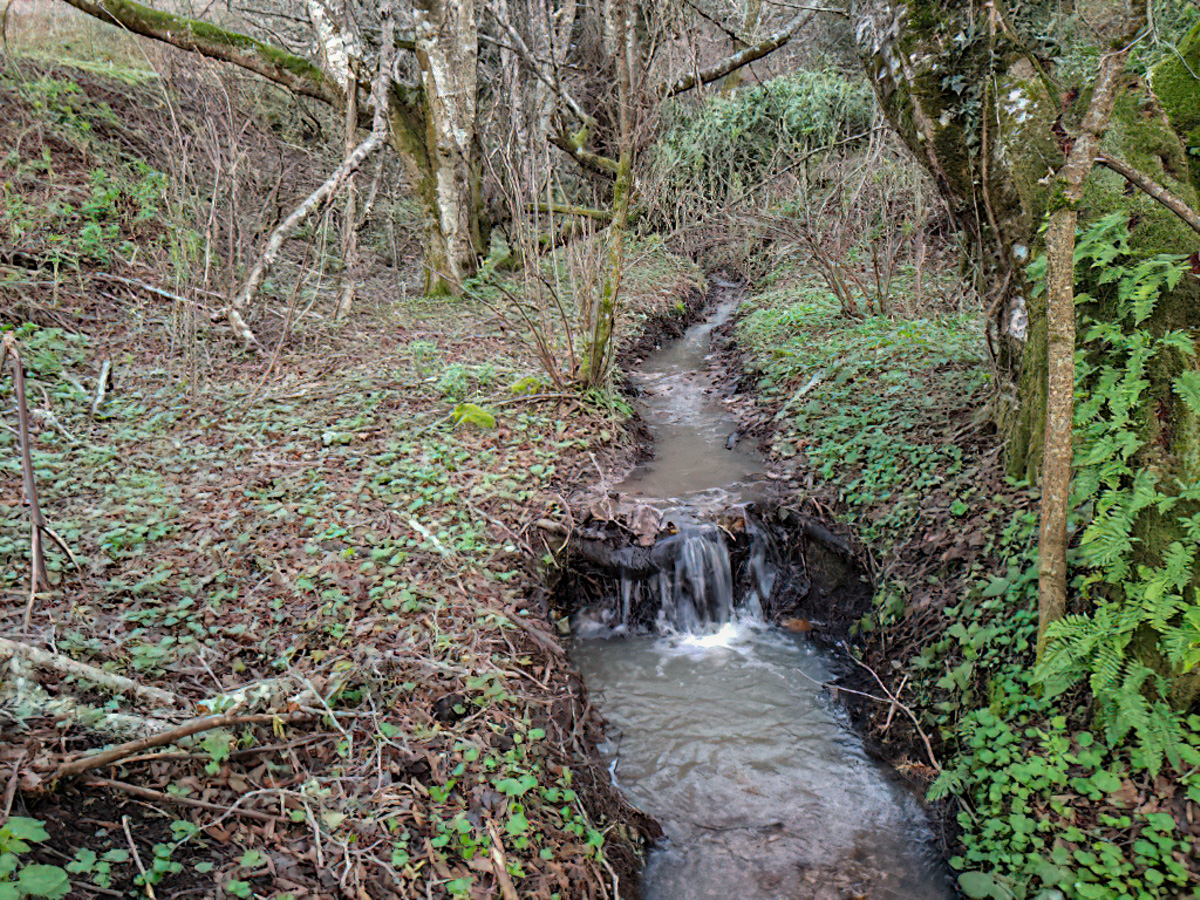
Feeder stream into Honsinger Creek
For contrast, see the photo below of a portion of the creek that has been rehabilitated. In 2017, this creek was a gully ~20 ft deep with steep sides and fast-running water. Today, the creek bottom is almost level with the surrounding pasture. By layering tree branches and brush above the incised channel and stomping and grazing cattle on top of the vegetation layers, we were able to raise and widen the gully bed over several years. Now the water is slowed as it moves over woody debris and through a wider channel and sediment is captured, reducing risk to both farms and habitat in the lower watershed and estuary.
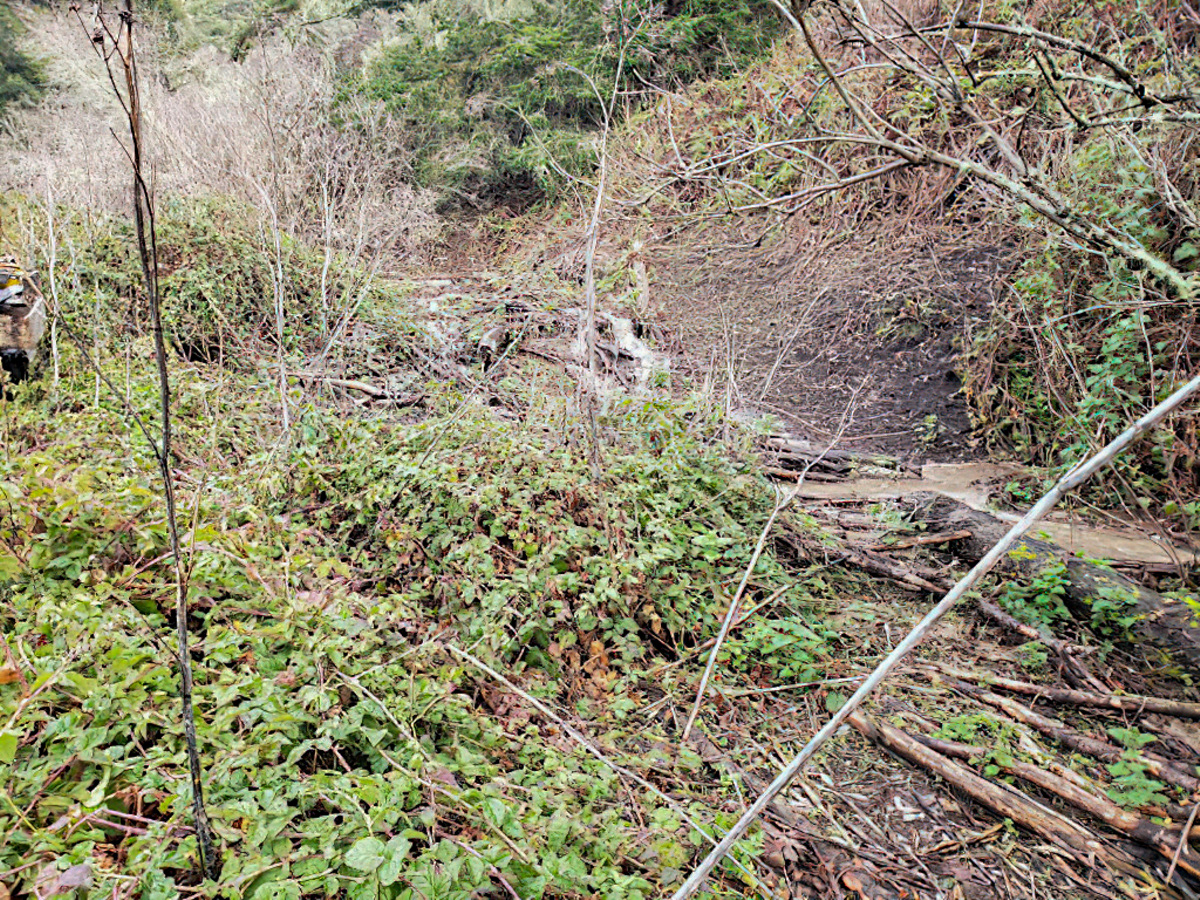
Rehabilitated portion of a creek (and former gully) on TomKat Ranch
Nature is more powerful than human attempts to control, so the question we ask ourselves each day is: How can we work WITH nature—using human ingenuity and intentional stewardship to increase both resiliency and our ability to recover when nature greets us with extremes?
As we continue to trial and share different approaches at the ranch, we also continue to learn. In that spirit, here are a couple of our favorite resources about managing land and water, as well as a few that have come across our desk this month. We welcome other resources you might have, so please send them to reachout@tomkatranch.org.
Resources:
- Stream restoration doesn’t have to cost an arm and a leg – On Land
- Water in Plain Sight by Judith Schwartz
- By Walter Jehne: Walter Jehne: Restoring water cycles to naturally cool climate | Soil Carbon Coalition and Webinar Walter Jehne: Hydrological Cooling and the Soil Sponge | Land
- Re-greening a Dryland Watershed
- Cuenca Los Ojos
- The Water Abundance Paradigm – The Four R’s Of Regenerative Hydrological Systems | 7th Generation Design
- Not All Rainfall is Effective